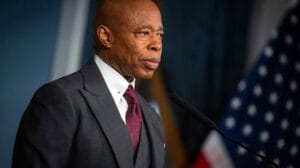The Evolving NYC Job Market: Remote Work and Its Impact
The nature of the job market itself has undergone a sea change in New York City within the last couple of years from what it was earlier-a city of pulsating offices, a fast-moving corporate world, and towering business districts.

The nature of the job market itself has undergone a sea change in New York City within the last couple of years from what it was earlier-a city of pulsating offices, a fast-moving corporate world, and towering business districts. The COVID-19 pandemic undoubtedly accelerated the trend of remote work, which made gradual changes around the world in workforce composition and completely altered the economic topography of the city.
As the industries moved to adapt to the new reality, remote work redefined not only how New Yorkers worked but also made lasting changes in the city’s real estate market, office spaces, and wider economy.
Remote Work Rises in NYC
New York City was centered around physical office spaces before the pandemic, especially in Midtown and the Financial District in Manhattan. This is indicative of the grind that many consider to be corporate life, as thousands flocked into these areas daily. Beginning in early 2020, COVID-19 materially forced a shift toward working from home due to the policies of COVID-19 in maintaining social distancing necessities while keeping business operations running.
What began as a temporary fix to an unprecedented crisis gradually became business as usual. As companies adapted to the new normal, it emerged that the traditional office model was not the only possible way for them to work. Large sectors-business and finance, technology, media, and consulting-embraced flexibility offered by remote working. The convenience of working from home saved employees from lengthy commutes and gave them a better sense of work-life balance.
A study done by the Partnership for New York City found that by mid-2021, almost 80% of office workers in Manhattan were working from home. Even when the restrictions started getting lifted, companies had difficulty having workers return full time to the office. It was a trend proving that remote work was not just a stopgap but a new reality for many businesses.
Hybrid Work Models: A New Norm
As the pandemic gained momentum, many companies used a hybrid work model in which employees split their labor between home and the office. It was some kind of compromise that attempted to retain the flexibility that workers had grown accustomed to, yet facilitated face-to-face collaboration on specific activities.
The major companies that followed were JPMorgan Chase, Google, Facebook, and so many more. The companies realized the future of work would not go back to the way it was before the pandemic. In this model, employees usually come into the office two to three days per week; they use those days for meetings, brainstorming, and team-building activities. Meanwhile, tasks to be done at home are deep focus and individual work.
The hybrid work model has irreversibly altered the corporate landscape. Those things that were once considered “a given”-like office spaces-are now being called into question. Employers wonder if it’s necessary to maintain as large of an office footprint when fewer employees come into the office every day.
The Transformation of NYC Office Spaces
Probably the most visible effect of telework on NYC has been their reinvention of office spaces. This was driven by either a hybrid model or an entirely remote adaptation by companies, hence making demands for traditional office leases practically nil. This trend has commercial real estate developers and landlords at the point now where they’re struggling with very many vacant office buildings, mostly in key business areas of Manhattan.
In turn, many companies have reduced or redeveloped their office space. Many have relocated their vast traditional office setting to smaller, flexible space designed for collaboration somewhat than individual work. Co-working spaces like WeWork have become quite popular lately because of their flexible, short-term leasing options rather than commitment with long-term investment in office space.
Other recent trends in the space include the adoption of “hot-desking” or shared desks, where employees do not have a single desk that they work from; rather, they will use whatever desk is open when they come into the office. This model lets companies maximize space efficiency and reduce overhead associated with maintaining large, underutilized offices.
It has also increased the demand for office space in less central areas such as Brooklyn and Queens. The search for office spaces outside of Manhattan’s very expensive real estate market was one of the huge requirements that accommodated companies that increased their workforce in the outer boroughs or suburbs. This office decentralization marks a main milestone in change in the corporate landscape of the city.
Economic Ripple Effects
Going fully remote sent ripples in a number of different ways through the New York City economy. The most prominent is what it did to local businesses that relied on office workers. Restaurants, cafes, dry cleaners, and retail shops in business areas like Midtown and the Financial District witnessed a dramatic reduction in foot traffic. With fewer employees commuting to the office, these businesses have barely survived. Besides that, office occupancy reduction has taken its toll on the commercial real estate market. In 2021, the vacancy rate for Manhattan office spaces soared to more than 16%, something it had not seen in decades. Without other options, many landlords started giving incentives-such as refuge from rent, free months, and flexibility with leasing-to make healthy sales. It has led people to question the long-term health of NYC’s Commercial Real Estate Market.
Besides, public transportation suffered. The Metropolitan Transportation Authority has watched ridership dive, especially during the peak hours of commuters. Numbers have since recovered gradually but stayed below the levels of pre-pandemic times, casting questions over the financial sustainability of MTA if remote work becomes a trend.
Rethinking Traditional Work Models
While remote and hybrid models of work are far more convenient for employees and reduce company costs, a host of other issues also come into play. For one, some employers are concerned about the long-term consequences on company culture, collaboration, and innovation. This is due to the fact that in-person interactions allow for casual moments of spontaneous brainstorming and relationship-building-one of the main reasons employees say they value physical time in the office. Also, not every industry is suited for working remotely. Health, hospitality, construction, and manufacturing require one’s physical presence on the site. Thus, with the shift in remote working, it is unequal in the job market. It only has increased existing inequalities in a way that the more professional, white-collar workers benefited from remote work opportunities more than the low-income, front-line workers.
A vision of the future of work in NYC The growth of remote work, accordingly, has brought profound changes to the New York City job market, starting a tectonic shift in ways, places, and even the question of why people work. With more companies adopting hybrid models and questioning why they need big office spaces, it’s forcing a reevaluation of what it might mean to the city’s commercial real estate market. That has created an economic ripple into local businesses, public transportation, and real estate-a deep reach that challenges the ability of NYC’s future as a corporate hub. Yet while challenges will remain, one of the strengths of New York City has always been its ability to evolve. Inasmuch as work will continue changing, no doubt the city will keep trying to balance the needs of remote work with its economy and infrastructure. And as this transition continues, what has been learned from the remote revolution will help determine-continually Builds-the future of work in one of the world’s most important urban centers.











